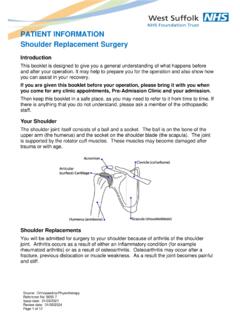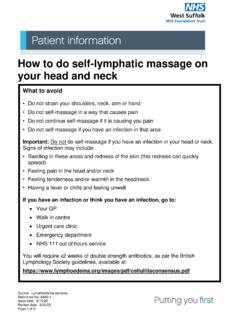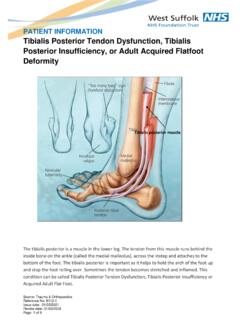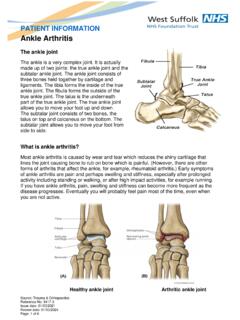Transcription of Optical Coherence Tomography (OCT)
1 Source: Eye Treatment Centre Reference No: 6555-1 Issue date: 11/02/22 Review date: 11/02/25 Page 1 of 2 Optical Coherence Tomography (OCT) What is an OCT scan? An OCT is a non-invasive medical imaging technique, using light waves, to produce images of your eye. This helps your doctors and health professionals to diagnose and manage your condition. OCT imaging systems are used to provide details of the back of your eye called the retina, and with the addition of extra lens an OCT can also provide detailed images of the front surface of the eye called the cornea. They assist in early detection and monitoring of various diseases such as glaucoma , Diabetic Retinopathy and Age Related Macular Degeneration.
2 OCT instruments use very advanced technology to detect abnormalities at an incredibly early stage. You will find OCT s in most hospital eye departments and the results that can be obtained are incredibly detailed. Why should I have an OCT scan? Having an OCT scan in combination with your normal eye test will allow us to obtain the most detailed information about your overall eye health. Early detection will lead to timely treatment and better outcomes for the health of your eye. Page 2 of 2 What happens to my images? Your images will be stored on file, so that when you see us again for your next appointment, we can compare your images to see if anything has changed.
3 What happens during my scan? You are simply required to sit in one position and look at a green cross. The scan will not touch your eye or blow air at your eye. An OCT scan will not affect a pacemaker. How long does it take? The OCT scan is a very quick process and should take no longer than a few minutes. For further information If you have any further questions or worries, either before or after the test, please do not hesitate to ask. If you wish to contact the Eye Department: Telephone 01284 713815 / 01284 712636 Monday to Thursday to , Friday to At the weekend and out-of-hours: Telephone 01284 713000 and ask to speak to the on-call Ophthalmic doctor.
4 If you would like any information regarding access to the West Suffolk Hospital and its facilities please visit the website for AccessAble (the new name for DisabledGo) West Suffolk NHS Foundation Trust













